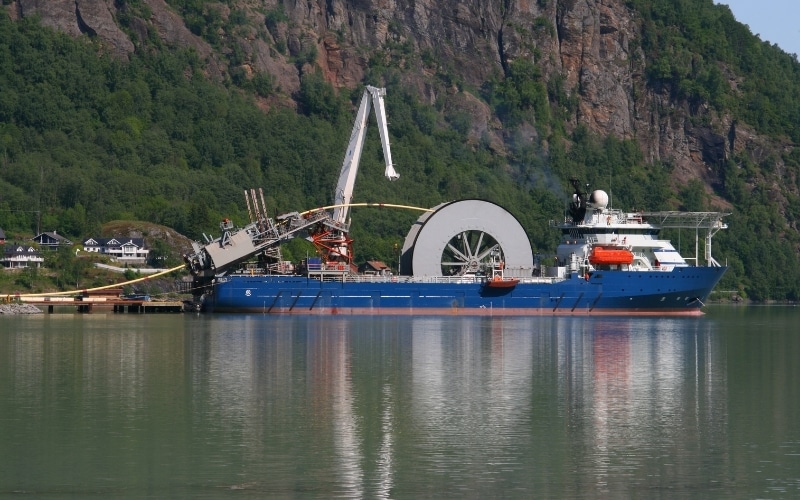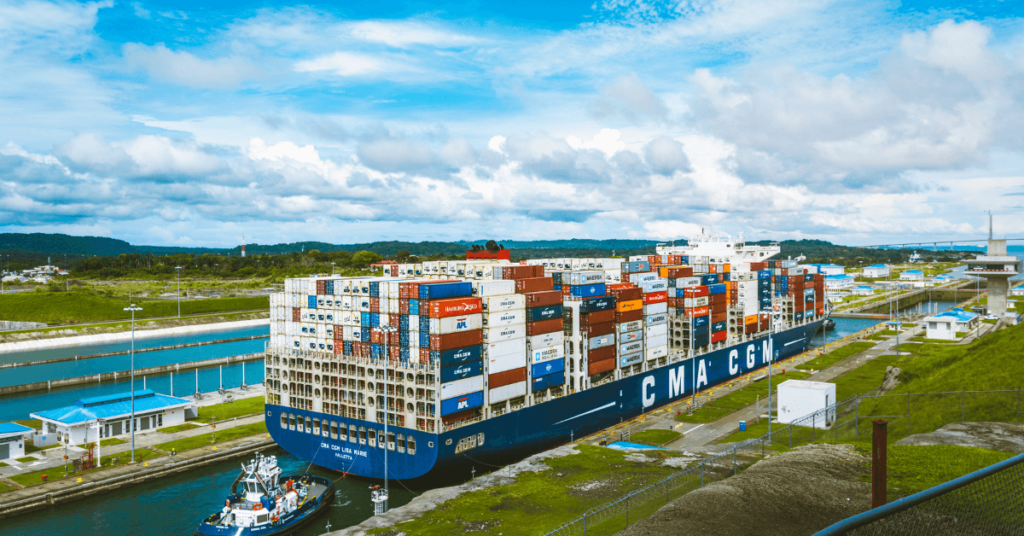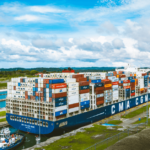How Undersea Cables are Laid by Cable Ships?
With the global explosion of world-wide telecommunication, the demand for underwater communication has become increasingly requisite. Underwater cables are laid from specially designed cable ships which can stock thousands of miles of coiled cable in their holds. The special amplifiers, spaced about 25 miles apart, within these undersea cables, are used usually to boost up the voltage of the signals carried in them in order to prevent the losses in the cable.
However, the cable ships must take necessary measures while laying out the fiberoptic cables in the sea bed to ensure that they do not break and the amplifiers do not get damaged, and can work for many decades uninterruptedly. Special techniques are used to accomplish this, which are further discussed in the article.
Types of techniques Used
There are mainly four different installation techniques used usually for different segments of a cable route, which are:
1. Shoreline
Here, in order to install undersea cable conduits passing under the beach and any nearshore reef, Directional Drilling techniques are often used to minimize impacts on them.
2. Shallow Waters
Here, most importantly where fishing is prevalent, the underwater cables are needed to be buried to reduce damage on them. Trawler equipments like large beam trawls are used for completely severing an undersea cable. While passing through soft bottom areas, ideal for ship anchoring, trawling and other bottom-fishing techniques, the cable is buried typically to be protected from the fishing gear.
3. Hard Bottom Area
Armoured cables are used while passing through these areas where burial is impracticable and anchoring is anticipated. Once placed these cables do not move laterally.
4. Deep Ocean
In these areas where no or bottom-fishing gear or anchoring is anticipated, the underwater cables are simply laid flat on the ocean floor. No adverse effect for this has been proved so far.
Burying Equipments
The cable vessel pulls an underwater plough which incessantly cuts a furrow and puts the fiberoptic cable into the furrow. The burying device requires substantial amounts of power from the ship for necessary operation and towing.
- The plough, attached to the device, has an altitude control for lifting and lowering it.
- A television camera is also connected for checking if the cable is entering the plough correctly.
- A Magnetometer checks whether the cable has been buried behind the plough properly or not.
- A depressor arm lifts and closes while a cable-repeater link passes through the attached plough.
- This type of plough has three separate lines extending from the ship which are namely – an umbilical cable for the various operations, a tow wire to tow the plough, and the undersea cable itself which is to be buried.
Installation
Undersea Cable installation is environmentally a low impact commercial process, even for its maintenance, operation, and repairing. Albeit there is doubt about the impact of fiberoptic cables, for they have to be as claimed by the industry. Previously laying of undersea cables was based mainly on long lines like intercontinental telecommunications which was not cost effective at all and the cable ships were unable to handle short cable lengths.
The ideal method is first to excavate a trench filled in by natural processes in the sea bed, and then, from a cable ship, lay a line of flexible member with greater strength and lower cost than the concerned cable. Finally the cable is laid in a distinguished subsequent operation. Alternatively the underwater cable could be laid first and then be buried as a second operation.
The Line used in the operation should be immune to corrosion and usually be a steel hawser for the sake of lowering the risk of damage. If there is an obstruction while laying the line, a length of line could possibly be recovered and re-laid on a separate route diverting to avoid the blockage; another way is to suspend the operation till the obstruction is removed.
The powerful line guides the plough by direct physical engagement, however, power assisted guidance is preferred for better operation. For this electromagnetic detectors are utilized which are responsive to the ferromagnetic property of a steel line. The second laying operation requires a plough, preferably of the kind, using high-velocity water streams to construct the trench.
Utility
The previously used small diameter fiberoptic cables were damaged by fishing boats. To reduce the risk of damaging, modern day underwater cables are buried in the ocean floor with the facilitation of special under sea ploughs. Even though these undersea cables are still exposed to rocky bottoms and over undersea cliffs, special measurements are being taken with specially equipped cable ships for management of the cables and help repair them whenever it’s necessary.
Latest Shipboard Guidelines Articles You Would Like:
Do you have info to share with us ? Suggest a correction
Subscribe To Our Newsletters
By subscribing, you agree to our Privacy Policy and may receive occasional deal communications; you can unsubscribe anytime.
Web Stories






















The Oceanic device of I t Appliances is the mother of super hit technology even technical civilization.